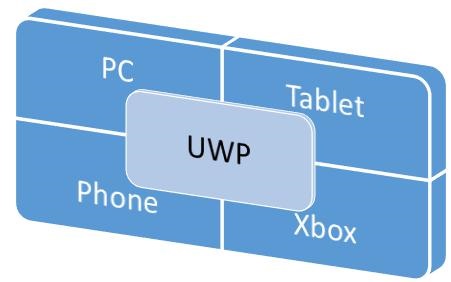
- Windows 10 - Home
- Windows 10 - Introduction
- Windows 10 – UWP
- Windows 10 – First App
- Windows 10 - Store
- Windows 10 - XAML Controls
- Windows 10 - Data Binding
- Windows 10 - XAML Performance
- Windows 10 - Adaptive Design
- Windows 10 - Adaptive UI
- Windows 10 - Adaptive Code
- Windows 10 - File Management
- Windows 10 - SQLite Database
- Windows 10 – Communication
- Windows 10 - App Localization
- Windows 10 - App Lifecycle
- Windows 10 - Background Execution
- Windows 10 - APP Services
- Windows 10 - Web Platform
- Windows 10 - Connected Experience
- Windows 10 - Navigation
- Windows 10 - Networking
- Windows 10 - Cloud Services
- Windows 10 - Live Tiles
- Windows 10 - Sharing Contract
- Windows 10 - Porting to Windows
Windows 10 Development - Introduction
This tutorial is designed for people who want to learn how to develop Windows 10 applications. In this tutorial, we are going to learn −
- Windows 10 application development
- Updates of the new OS released by Microsoft
- New features for the developers in the updates
A lot of interesting app scenarios are now possible that were not available to us in the first release. Microsoft has not only added new APIs, they have also extended the existing APIs.
Universal Windows app
A Universal Windows app was first introduced in Windows 8 as the Windows Runtime, which was built upon the Universal Application Platform.
Now, in Windows 10, the name of the Universal Application Platform has been changed to Universal Windows Platform (UWP). You can build modern and fully immersive apps by targeting Windows 10 devices for Windows Store such as PC, tablet, phone, etc.

In Windows 10, you can easily develop applications to reach all the devices supported on Windows 10 with just −
- One API set
- One app package
- And one store
The Universal Windows Platform also supports different screen sizes and different interaction models such as touch pad, mouse & keyboard, a game controller, or a pen.
Characteristics of UWP apps
Here are some of the characteristics of Universal Windows apps, which make it superior to Windows 10.
You can target device families and not OS like Windows 8.1.
Apps are packaged and distributed using the .AppX packaging format, which ensures that your apps can be deployed and updated seamlessly.
You can submit your application to the Windows store and it will make it available on all device families, or only those devices you choose. You can easily manage all your apps for Windows devices in one place.
You can limit the availability of your application to the particular device family.
The core APIs of Universal Windows Platform (UWP) are the same across all Windows device families. So your app can run on all Windows 10 devices if it is uses only the core APIs.
With the help of Extension SDKs, you can light up your application for particular devices.
Development Choices
Universal Windows applications can be created in any of the following languages −
- C# or Visual Basic with XAML
- JavaScript with HTML
- C++ with DirectX and/or XAML
You can also write components in one language and use them in an application that is developed in another language.